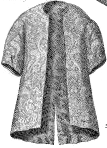
Crown jewels are the objects of metalwork and jewellery in the regalia of a current or former monarchy. They are often used for the coronation of a monarch and a few other ceremonial occasions. A monarch may often be shown wearing them in portraits, as they symbolize the power and continuity of the monarchy. Additions to them may be made, but, since medieval times, the existing items have been typically passed down unchanged, symbolizing the continuity of a monarchy.

The Crown Jewels of the United Kingdom, originally the Crown Jewels of England, are a collection of royal ceremonial objects kept in the Jewel House at the Tower of London, which include the coronation regalia and vestments worn by British monarchs.
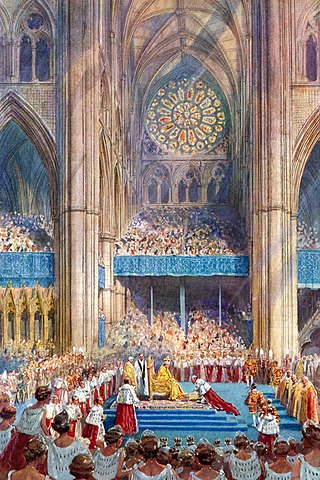
The coronation of the monarch of the United Kingdom is an initiation ceremony in which they are formally invested with regalia and crowned at Westminster Abbey. It corresponds to the coronations that formerly took place in other European monarchies, which have all abandoned coronations in favour of inauguration or enthronement ceremonies. A coronation is a symbolic formality and does not signify the official beginning of the monarch's reign; de jure and de facto their reign commences from the moment of the preceding monarch's death or abdication, maintaining legal continuity of the monarchy.
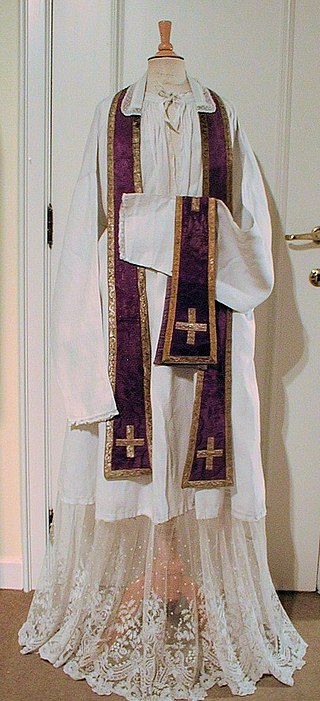
The stole is a liturgical vestment of various Christian denominations, which symbolizes priestly authority; in Protestant denominations which do not have priests but use stoles as a liturgical vestment, however, it symbolizes being a member of the ordained. It consists of a band of colored cloth, usually of silk, about seven and a half to nine feet long and three to four inches wide, whose ends may be straight or may broaden out in the shape of a spade or bell. The center of the stole is worn around the back of the neck and the two ends hang down parallel to each other in front, either attached to each other or hanging loose. The stole is almost always decorated in some way, usually with two crosses, or sometimes another significant religious design. It is often decorated with contrasting galloons and fringe is usually applied to the ends of the stole following Numbers 15:38–39. A piece of white linen or lace may be stitched onto the back of the collar as a sweat guard, which can be replaced more cheaply than the stole itself.

The colobium sindonis is a simple sleeveless white linen shift worn by British monarchs during part of the coronation service. It symbolises divesting oneself of all worldly vanity and standing bare before God. The monarch is continually robed and disrobed during the ceremony, according to ancient custom.
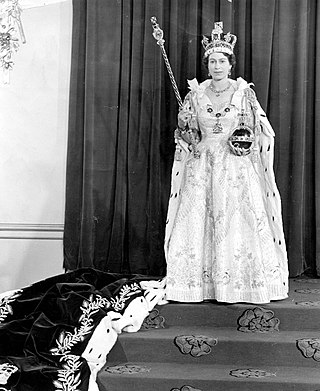
Regalia is the set of emblems, symbols, or paraphernalia indicative of royal status, as well as rights, prerogatives and privileges enjoyed by a sovereign, regardless of title. The word originally referred to the elaborate formal dress and accessories of a sovereign, but now it also refers to any type of elaborate formal dress. The word stems from the Latin substantivation of the adjective regalis, "regal", itself from rex, "king". It is sometimes used in the singular, regale.

Danish Crown Regalia are the symbols of the Danish monarchy. They consist of three crowns, a sceptre, globus cruciger, the sword of state and an ampulla . The Danish Royal Regalia are kept in the treasury at Rosenborg Castle. The oldest of these is Christian III's sword of state from 1551. They further include King Christian IV's diamond; pearl- and gold-embroidered saddles; objects carved from ivory and rock-crystal; lapidary pieces of precious stones, and brooches in the form of fantastic animals.
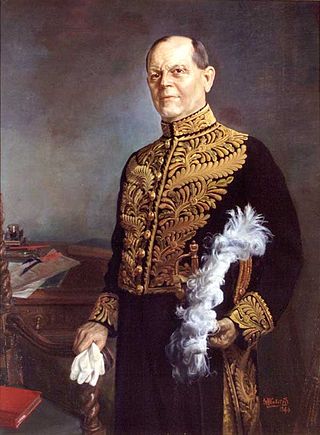
Court uniform and dress were required to be worn by those in attendance at the royal court in the 19th and early 20th centuries.

Cloth of gold or gold cloth is a fabric woven with a gold-wrapped or spun weft—referred to as "a spirally spun gold strip". In most cases, the core yarn is silk, wrapped (filé) with a band or strip of high content gold. In rarer instances, fine linen and wool have been used as the core.

The Holy Roman Emperor received the imperial regalia from the hands of the Pope, symbolizing both the pope's right to crown Christian sovereigns and also the emperor's role as protector of the Catholic Church. The Holy Roman empresses were crowned as well.

The accession of the King of France to the royal throne was legitimized by a ceremony performed with the Crown of Charlemagne at the Reims Cathedral. In late medieval and early modern times, the new king did not need to be anointed in order to be recognized as French monarch but ascended upon the previous monarch's death with the proclamation "Le Roi est mort, vive le Roi!"

The coronation of George VI and his wife, Elizabeth, as king and queen of the United Kingdom and the Dominions of the British Commonwealth, Emperor and Empress consort of India took place at Westminster Abbey, London, on Wednesday 12 May 1937. George VI ascended the throne upon the abdication of his brother, Edward VIII, on 11 December 1936, three days before his 41st birthday. Edward's coronation had been planned for 12 May and it was decided to continue with his brother and sister-in-law's coronation on the same date.
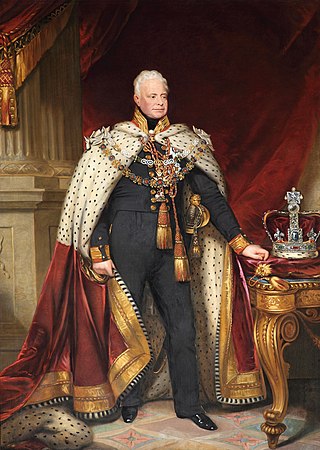
The coronation of William IV and his wife, Adelaide, as King and Queen of the United Kingdom took place on Thursday, 8 September 1831, over fourteen months after he succeeded to the throne of the United Kingdom at the age of 64, the oldest person to assume the throne until Charles III in 2022. The ceremony was held in Westminster Abbey after a public procession through the streets from St James's Palace, to which the King and Queen returned later as part of a second procession.
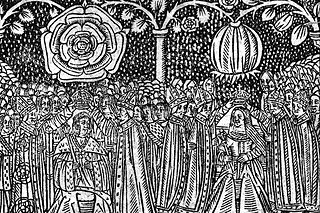
The coronation of Henry VIII and his wife Catherine as King and Queen of England took place at Westminster Abbey, London, on 24 June 1509. Henry acceded to the throne two months prior, following the death of King Henry VII on 21 April, and Catherine became his wife and queen on 11 June. The ceremony was presided over by William Warham, the incumbent Archbishop of Canterbury, and organized by Lady Margaret Beaufort, the King's grandmother.

The coronation of Mary I as Queen of England and Ireland took place at Westminster Abbey, London, on Sunday 1 October 1553. This was the first coronation of a queen regnant in England, a female ruler in her own right. The ceremony was therefore transformed. Ritual and costume were interlinked. Contemporary records insist the proceedings were performed "according to the precedents", but mostly these were provisions made previously for queens consort.

The Robe of State is a robe worn by the British monarch on state occasions. A monarch typically has a robe made for their coronation and reuses it when attending the State Opening of Parliament at the start of each legislative session. Traditionally the robes have an ermine cape with a long train made of crimson coloured velvet, trimmed in gold lace and lined with ermine.

The Stole Royal is an item of regalia used during the coronation of a British monarch, similar to the stoles worn as vestments by clergymen. It is donned after the anointing of the monarch and is worn throughout the crowning, receiving of homage and conclusion of the communion. The Stole Royal is removed, with other garments, before the procession from Westminster Abbey for which the Imperial Robe is worn.

The Robe Royal is a robe worn by the British monarch when they are crowned at their coronation. It is donned just before the monarch is invested with the Orb, Ring and Sceptres. It is worn during the crowning and paying of homage. The Robe Royal used is one originally created for the 1821 coronation of George IV.

The Imperial Robe is a robe used in the Coronation of the British monarch. It is donned in the final stages of the ceremony for the procession of the monarch from Westminster Abbey to the waiting Gold State Coach. These Robes were last seen at the Coronation of Charles III and Camilla, with King Charles III wearing the Imperial Robe of George VI, and Queen Camilla having a new robe made for her.

The coronation glove is a single white glove worn on the right hand by the British monarch during part of their coronation. It is donned after they are invested with the Sovereign's Ring and remains in place during the crowning ceremony. The glove is removed prior to the taking of homage from the bishops and peers of the realm. Presenting the glove to the monarch was a right associated with the Manor of Worksop and in the past the gloves have been embroidered with the arms of the owner of that manor. In 1953 the Court of Claims ruled that the Henry Pelham-Clinton-Hope, 9th Duke of Newcastle had lost the right by passing the manor to a limited company. At the 1953 coronation the glove, now embroidered with the royal cypher, was presented to the monarch by the Chancellor of the Duchy of Lancaster.
